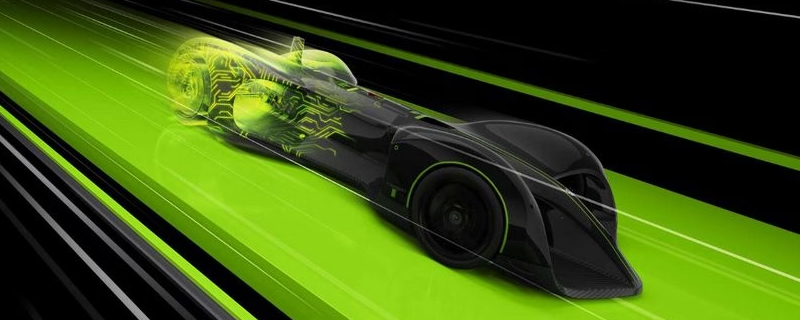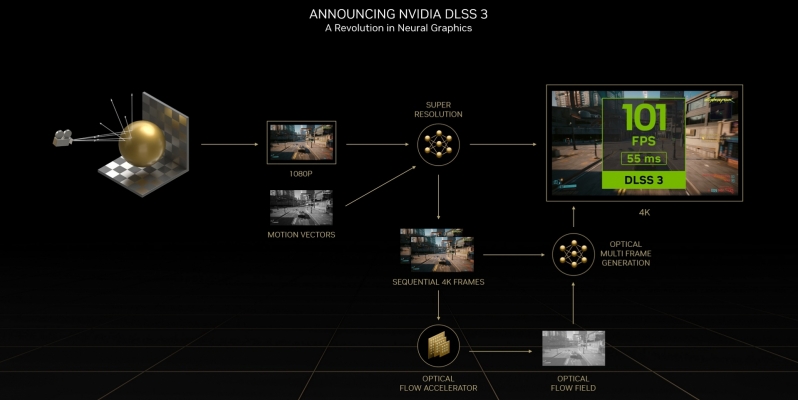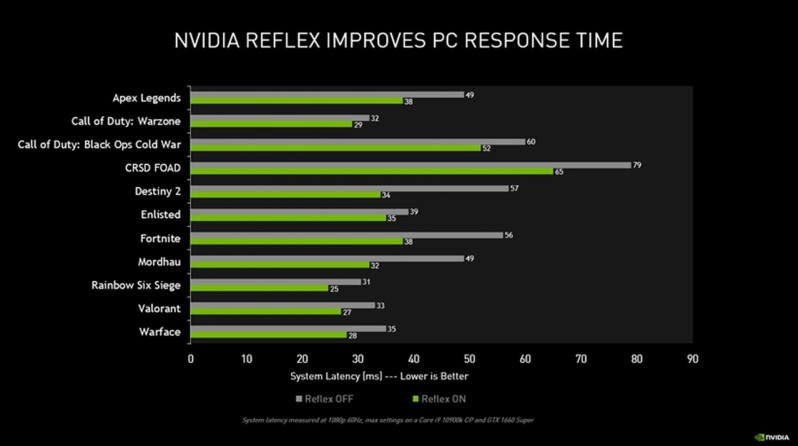Nvidia DLSS adoption explodes with DLSS 3 – Why is DLSS 3 being adopted 7x faster than DLSS 2?
Nvidia’s DLSS 3 tech has been adopted by developers seven times faster than DLSS 2
Let’s face it, Nvidia’s introduction of its RTX technologies has changed the face of gaming, delivering hardware accelerated AI and ray tracing to the masses with their RTX 20 series and pushing these technologies further with every subsequent GeForce hardware launch.
With Chat GPT and other AI innovations hitting the market, it is clear that AI has entered its prime time, and Nvidia have been working towards this moment to ensure that their hardware and software are the best available for AI games and applications.
Nvidia’s latest AI innovation is DLSS 3, which launched with their GeForce RTX 40 series of products in 2023. Now that six months has passed since this launch, it is clear that Nvidia’s latest iteration of DLSS is just as revolutionary as Nvidia claimed it to be, with the technology being adopted seven times faster than DLSS 2 in its first six months. So far, 28 games already support DLSS 3, and that list is growing fast.
DLSS is a collection of performance enhancing AI technologies that Nvidia has developed, technologies that enable improved performance for both games and productivity applications. While DLSS 1, DLSS 2, and DLSS 3 all are different technologies, they all serve the same purpose. DLSS is about boosting performance, and so far over 270 games and applications now use the technology.
To date, over 270 games and applications support DLSS, and that number is increasing at a rapid rate.
DLSS 3 – Nvidia’s Performance Multiplier
DLSS 3 is both a hardware and software innovation. That’s why DLSS 3 is only available on Nvidia’s latest RTX 40 series products and how Nvidia has managed to create DLSS 3 in the first place. While DLSS 1 and DLSS 2 utilised AI to upscale lower resolution frames to higher resolutions, decreasing rendering loads, DLSS 3 moves things in a different direction by using AI to generate whole frames, creating new intermediate frames between traditionally rendered frames to act as a framerate multiplier.
With DLSS 3, Nvidia are using the AI performance and unique features of their RTX 40 series GPUs to multiply the performance of games. With DLSS Frame Generation, framerates can be doubled to increase motion clarity and deliver gamers a smoother gaming experience. This can be combined with Nvidia’s DLSS Super Resolution (DLSS 2) technology to deliver additional performance benefits, and can even deliver performance gains for games that are CPU-limited.
So how does DLSS 3 work?
Nvidia’s DLSS 3 Frame Generation feature takes four inputs, the data from current frames, the data from prior frames, game engine data (like motion vectors and depth data), and data from an optical flow field that is generated using the RTX 40 series’ Ada Optical Flow Accelerator (OFA).
These inputs can be used by Nvidia’s DLSS 3 software to create intermediate frames between a game’s current frame and prior frame, effectively adding an extra AI frame between traditionally rendered frames. Motion vectors and optical flow data are used to make sure that everything in these AI generated frames are correctly positioned and look as they should, allowing games to look clearer in motion thanks to their higher framerate.
More Frames – Less Work
With Nvidia’s DLSS 3 technology, gamers can receive greater than 2x performance benefits. Nvidia’s DLSS Super Resolution (DLSS 2) technology can increase framerates by decreasing a game’s rendering load and using the power of Nvidia’s tensor cores to upscale these images, and DLSS 3 can then be used to add frame generation into the mix to effectively double a game’s framerate.
When DLSS Super Resolution is set to performance mode, a 4K frame can be rendered using an traditional render resolution of 1080p, effectively quadrupling a game’s resolution using the power of AI. DLSS Frame Generation can then be used to add additional frames, as shown below.
Below, we can see an example where a traditional 1080p frame is upscaled to 4K using DLSS Super Resolution (DLSS 2) and a game’s displayed framerate is doubled using DLSS Frame Generation (DLSS 3). In this example, DLSS Super Resolution delivers a 4x increase in displayed pixels and DLSS Frame Generation double the number of displayed frames/pixels. Combined together, an 8x increase in displayed pixels is achieved over traditional rendering, delivering incredible performance benefits.
DLSS 3 – Three Technologies in One
Nvidia’s DLSS 3 isn’t just delivering DLSS Frame Generation to games. DLSS 3 is a combination of several technologies. Games that support DLSS 3 also support Nvidia’s DLSS 2 (DLSS Super Resolution) technology, and newer DLSS 3 games also support Nvidia’s DLAA (Deep Learning Anti-Aliasing technology), which is effectively DLSS Super Resolution when applied to native resolution frames (delivering high quality anti-aliasing).
The last of DLSS 3’s three technologies is Nvidia Reflex, a technology that decreases the input latency of games to reduce your PC’s response time and make games feel a lot more reactive to your inputs. Nvidia Reflex decreases the amount of time it takes for your PC to react to your inputs, allowing games to react faster to your in-game actions and feel more responsive.
With DLSS 3, Nvidia RTX 40 series users get to benefit from higher framerates, more responsive games, and increased motion clarity. That’s a win, win, win for GeForce users.
Making AI Matter for Gamers
With their suite of DLSS technologies, Nvidia is making AI a critical part of PC gaming. While similar techniques are possible without AI, like AMD’s FidelityFX Super Resolution 2.0 technology, Nvidia are undeniably the current leaders of the image upscaling pack, with DLSS giving them a major boon to lord over their competitors.
It cannot be denied that AI performance is now a factor that needs to be considered when purchasing a new graphics card, not just for productivity or creator applications, but for gaming as well. DLSS is Nvidia’s killer feature, showcasing that AI can greatly benefit PC gamers, and Nvidia have made it clear that they are working on more AI technologies. Outside of gaming, Nvidia has also delivered RTX Voice and RTX Super Resolution, two great add-ons for PC users.
What Games and Engines support Nvidia’s AI and RTX Technologies
Currently, Nvidia’s DLSS technology is available in over 270 games and applications, and that list is larger is you broaden the scope to also include ray tracing and other AI technologies, all of which fit under Nvidia’s “RTX” banner.
You can join the discussion on Nvidia’s impressive DLSS 3 adoption rate on the OC3D Forums.







